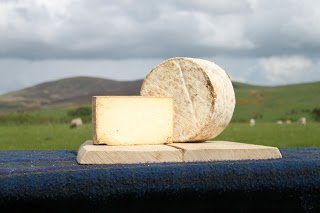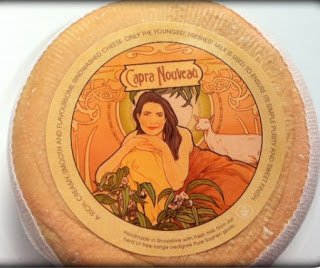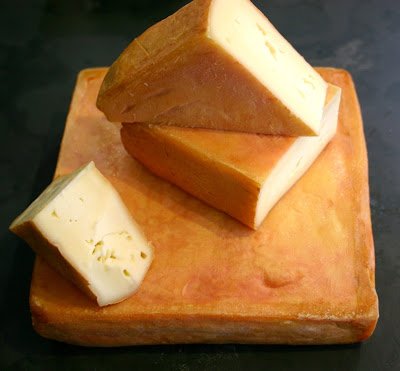Capra Nouveau
When she isn’t tweeting (which is a lot of the time) Sarah Hampton spends her time showering her herd of pedigree Saanen goats with love. Their pure white milk goes to make the highly acclaimed Capra Nouveau - a new washed rind Vacherin-style cheese, which is sweet and creamy and if left to mature almost collapses with ooziness. Hampton (that's her on the label by the way) has also launched a washed Gouda-style cheese called Dutch Mistress, which is earning rave reviews from chefs.
Where to buy: Anderson & Hill
Brother David
Holker Farm Dairy, Cumbria
Where to buy: Cartmel Cheeses; Neal’s Yard Dairy
Corra Linn
HJ Errington, Lanarkshire
 Made by HJ Errington of Lanark Blue and Dunsyre Blue fame, this Manchego-style ewes’ milk cheese is matured in cloth for six to 10 months and has a pretty mouldy rind. Sweet and earthy, Corra Linn is named after a waterfall in the Falls of Clyde. Selina Cairns, who has taken over production from her father Humphrey, also has some other new cheeses in the pipeline including one called Biggar Blue.
Made by HJ Errington of Lanark Blue and Dunsyre Blue fame, this Manchego-style ewes’ milk cheese is matured in cloth for six to 10 months and has a pretty mouldy rind. Sweet and earthy, Corra Linn is named after a waterfall in the Falls of Clyde. Selina Cairns, who has taken over production from her father Humphrey, also has some other new cheeses in the pipeline including one called Biggar Blue.
Cote Hill Farm, nr Market Rasen, Lincolnshire
Michael and Mary Davenport have been making cheeses since 2005, using milk from their herd of Red Poll and Friesian cows. Their newest cheese has been developed by their son Joe, who has recently joined the business. It's a semi-hard unpasteurised cheese, wrapped in a semi-permeable red coating and matured for three months. There's nothing particularly spectacular about the cheese, but it's creamy and mellow, and the texture makes it perfect for melting. A washed rind version called Cote Hill Reserve is also in development.
Where to buy: The Cheese Shop in Louth
Larkton Hall Farm, Cumbria
This Gruyere-style cheese was voted best newcomer at the 2011 British Cheese Awards and is made with unpasteurised cows’ milk near Malpas. Like Gruyere, it comes in great big wheels and, according to the BCA judges, has buttery, grassy notes with hints of white wine and red onions. Anne Connolly, who makes the cheese, previously worked as a chef in the Italian Alps.
Where to buy: The Chester Cheese Shop


